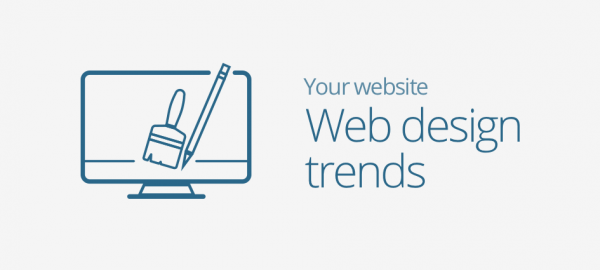Originality and functionality are the central drivers behind the web design work we’re likely to see emerging over the next twelve months. Here are six possible trends –
1. Refined Micro-Interactions
Micro-interactions have been an important aspect of great web design for some time. Social media platforms have increased our collective familiarity with these seemingly small features, perhaps most notably of all on Instagram where a heart pops up when a user double taps on an image to ‘like’ it. Throughout 2020, micro-animations and micro-interactions are set to become much more refined, to the point where they will become a key part of everyone’s online interactivity.
In addition to providing feedback and signposting important features, micro-interactions provide brands with an opportunity to further communicate their personality. So, for companies wanting to present a sleek image, their micro-interactions would likely be smooth and slow rather than bold and bouncy.
2. Design for Dark Mode
Throughout 2019, brands including Slack, Instagram and Pinterest embraced dark mode design. Whatsapp and Facebook are due to launch their dark mode designs in the very near future, and many users appreciate the choice.
Not only is it easier on both the eye and battery life, but many would also argue that it makes for a more pleasing UX and allows content to truly shine. As more smartphone makers strive to achieve a notch-less and bezel-free aesthetic, we can expect to see designers really push the boundaries of what’s possible with dark mode throughout 2020.
3. Minimalism Phase Two
Minimal designs are nothing new. They are particularly suited to brands which want their message to land immediately and to showcase their products in very concise and clear ways. One of the perks of minimalism is its ease of use and this year we should start to see more zero-friction interfaces that allow users to make instant payments and single-tap registrations.
4. Tall Imagery
Many designers have chosen to incorporate portrait images into their desktop experiences, and this is a trend that is set to become more prevalent as ever-increasing numbers of people view content on mobile devices. Interestingly, this trend has not stemmed from mobile-first designers simplifying their process and simply scaling up imagery to desktop rather than designing a unique experience. Many of these portrait images don’t adhere to the traditional 4:5 ratio and taller crops are specifically being selected to create visually striking designs.
5. Typographical Experimentation
The popularity of sans-serif, lower case typefaces has resulted in many websites looking strikingly similar. Excitingly, change is on the horizon and we should soon see an increase in retro fonts, animated typefaces, and handwritten typefaces.
Look out for websites integrating typeface combinations that don’t necessarily complement each other, but actually end up working well together within the context of the overall design. Traditionally imperfect designs are often overflowing with personality, further adding to the memorability factor.
6. Welcome to the Foldable Web
Many web design trends take their cue from new device innovation. As we begin to see more foldable devices entering the marketplace, designers will start delivering highly innovative concepts and experiences to foldable device users that they simply couldn’t find elsewhere. Keep a close eye on this trend as some of these designs are almost certain to go viral because this concept is so fresh and unique.
Lets see if these trends emerge and in the meantime, if you need space for your web design projects, check out our Web Hosting cPanel & WordPress packages.
